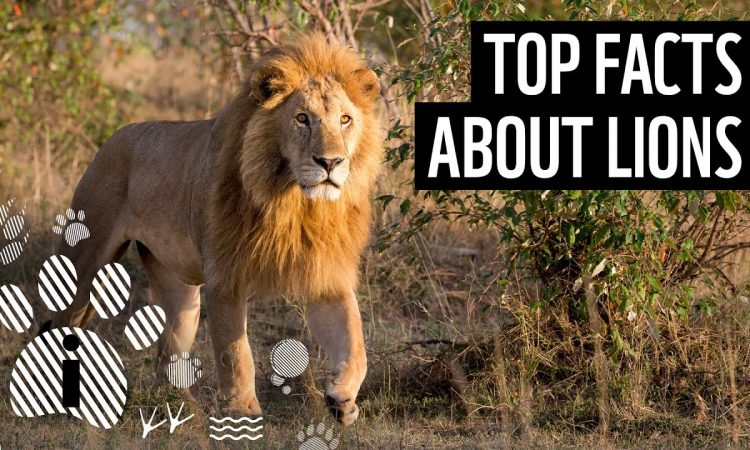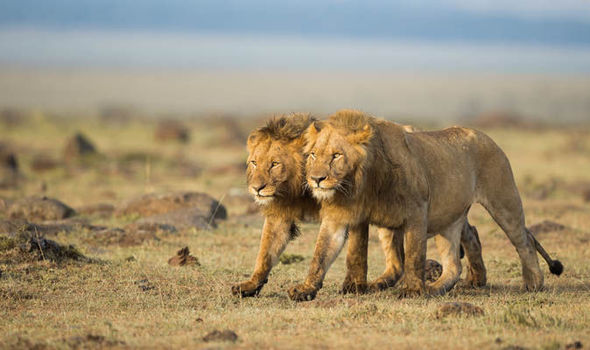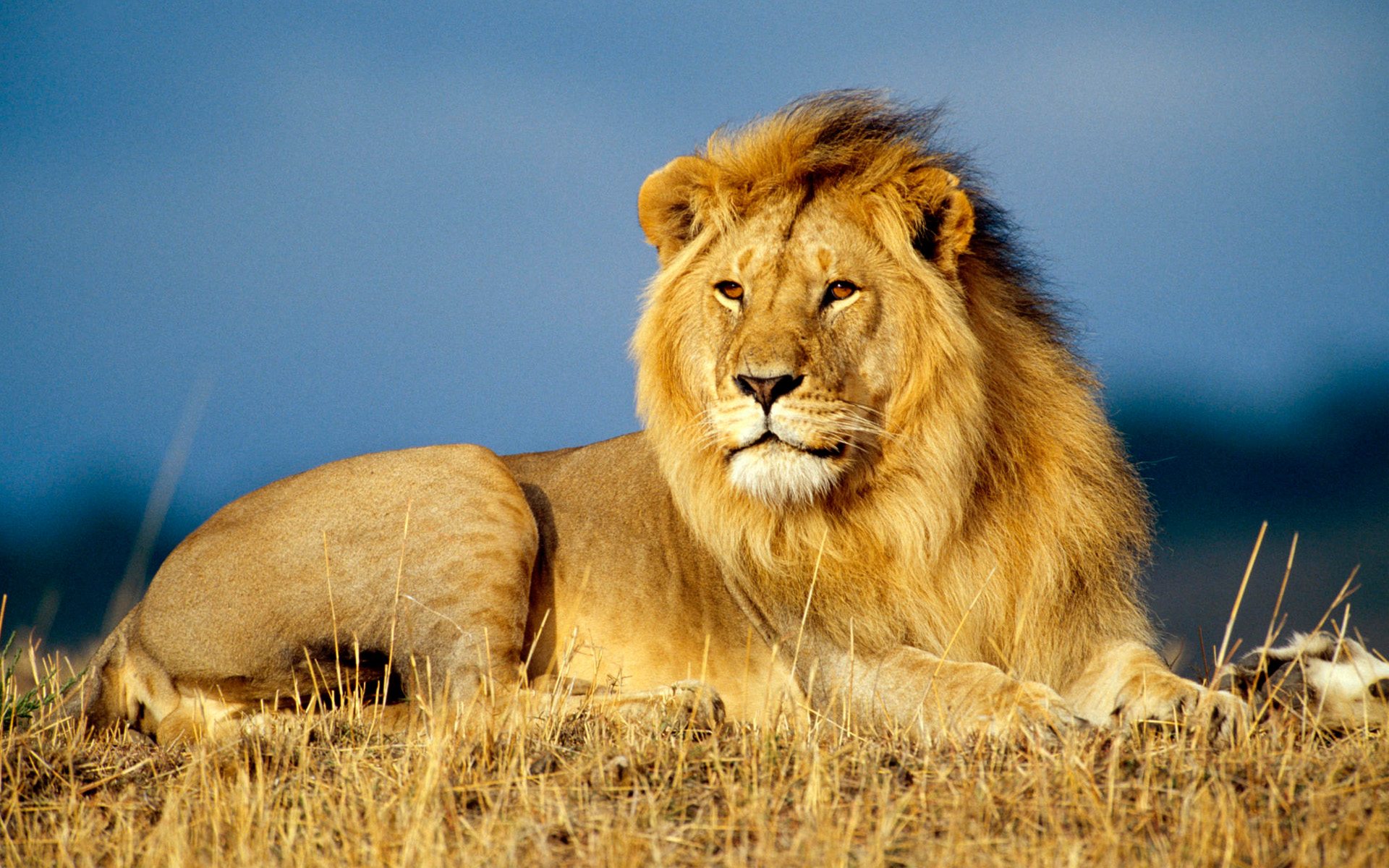Top 10 Astonishing Facts About Lions : Lions are one of the very significant animal species in the world. They color and decorate various national parks and national reserves in different ways in the world. They are also among the most dangerous animals to both other animals because they are predators that feed on the meet of other animals, as well as dangerous to human being. Lion species are said to be available in very few places in the world. They are available only in two continents that are Africa and in the Asian continent. Lion species have been playing a central role in tourist activities since they attract most international tourists to come and visit our national parks and reserves. This is because lion species are not available in other continents apart from the two mentioned prior. Due to this, wild lion species attracts many tourists to come and visit our national parks. Lion species are also one of the fewer wild species in various national parks and reserves all over the world. Despite the fact that lion species are very scarce, rather they are very common and popular around the globe as compared to other wild species. There are different things that everyone would dare to learn about the uniqueness of these dangerous species in the world. The following data shows the explorations of ten unique features that acts as the distinguishable features between lion species and other wild animals.

Almost all wild lion species are living in Africa; except for the small group of lion species that exists somewhere else in India. More than 85% of wild animals on the entire globe to make their living at African continent. Various lion species are living in Africa especially below the Saharan desert securing their hunting in the place around. Despite the fact that most lion species are living in Africa, it is the truth that there is a small population of lion species that are living in the forests of Gir that is the national park located in western part of India. Lion species that are located in the west and central part of Africa are said to be more closely related to these Asiatic lion species living around western part of India, as compared to those lion species that are found in southern and east part of African continent. This is because the geographical features between two places seem to be similar to each other.

Lion species are able to weigh 30 stone; Lion species are not only powerful but also the weigh a good number of kilograms. This may be the fact why these wild species are so powerful. Male lion species are tough on these as compared to female lion species. On average, male lion species weigh about 190kilograms (almost about 30 stone) while the female lion species weigh 126kilograms (almost about 20 stone). These wild species need this weight and power behind them to enable them in their hunting large prey and defend their pride and empires.
Lion species always start off the spotty; Young lion species have rosettes and spots on their sandy coats that helps them in various ways, but these spots and rosettes generally disappear as they mature.
Male lion species which are magnificent manes sometimes they tell stories; Male lions grow impressive manes the older they get. These manes grow up to 16cm long and are a sign of dominance over other species. The older they get, the darker their manes go. These manes are playing a significant role in attracting females, they may also provide protection to their neck and head from injuries when they are in fights.
Cubs are reared together; a pride of lions is usually made up of related females and their cubs. They are feeling so prestigious living and rearing their cubs together and in groups plus a male or small group of males who defend their pride. One of the very interesting things is that the lionesses are able to rear their cubs together and the cubs can suckle milk from any female lion with milk.
Lion species can get their water from plants; Lions are highly able to adapt various climatic conditions and can live in very dry seasons in different areas such as the Kalahari Desert. In those desert areas they are able to get most of their water from their prey and will even drink from some plant species such as the Tsamma melon. Some of these lion species are able to climb in the big trees and serve their hunting over there. These lion species that are able to climb trees when serving for their hunting are said to be available in Tanzania only and not in other places.
They are among few wild species which are said to be the big eaters; Lion species are one of the animals that eats tens of kilos per day. They are supposed to do so as a force from their energetic nature and ability to hunt. Wild lion species are said to be that they can eat up to 40kg of meat in a single meal – around a quarter of their body weight. Their tongues have sharp-pointed rasps, called papillae, which are used to scrape meat off the bones.
Lion species hunt during the storms; Lions do most of their hunting at night as their eyes have adapted to the dark and this gives them a huge advantage over their prey. They hunt more during storms as the noise and wind make it harder for prey to see and hear them. When hunting, lionesses have specific roles. Some play the role of ‘center’ and others the role of ‘wing’ – the wings chase the prey towards the centers.
These are the only cats that are able to roar together; Lions are the only known cat species where individuals roar together – with even young cubs joining in with their mews. The calling sequence usually lasts about 40 seconds. Prides often roar together to mark their territory – a roar can be heard from 5 miles away, Top 10 Astonishing Facts About Lions .

Lion species are not many as most people would think; Lion species are very few as compared to many other predators of the globe. They are very few in number as compared to other big five in the world. Lion species are thought to be as few as 23,000 lions only that have left in the wild all over the world. This is a very few numbers as compared to other wild animals such as elephants. For instance, when you discover that there are almost about 415,000 wild African elephant species, from that observation; you realize that the lion species numbers are incredibly very low. In fact, lions have disappeared from over 90% of their historical range which is the great depression among wildlife. Various threats that are facing lion species all over the globe; Lion species are among the wildlife species that are facing many challenges all over the world. They are not safe in either of the any continent in the world. As we have explored before that there are few species of lions around the globe and most of them are living around Africa, with the small group in India. African lion numbers are thought to have declined by over 40% in the just three generations. They are faced by different threats in their habitats. The following are some of the threats facing lion species all over the world; The main threats are retaliatory or preemptive killing to protect people and livestock, and decreasing natural prey and habitat (for example, due to expanding human settlements and therefore less available grazing). When their natural prey is scarce; lions can cause grave losses to livestock, which can destroy the income of local people. Climatic change; this is another threat that increase to the disappearance of lion species around the globe. Extreme weather may cause more droughts or delay the rains, affecting lions’ prey. They’re also killed for the illegal wildlife trade by human being in different national parks. In recent years, lion species have been dumped in to a great deal of in need by people all around the globe. The demand for lion bone as a substitute for tiger bone in traditional Asian medicine has risen and taken a great impetus.
As it has been explored above, the various unique features of lion species in the world; we have also passed across various threats and challenges facing lion species all over the world that may accelerate to their disappearance once people are not careful. So, the available lion species should be highly protected and kept in a safe environment to avoid their disappearance. Again, there should be the formulation of strict policies and laws that state and provide corporal punishment against those are dare to kill wild animal species especially for lion species. This will help in restoring a good number of lion species around the world.


